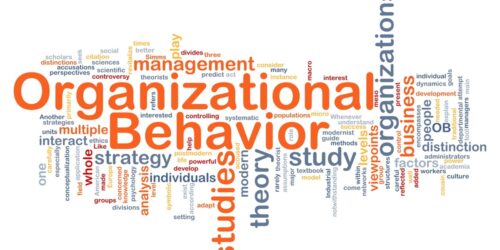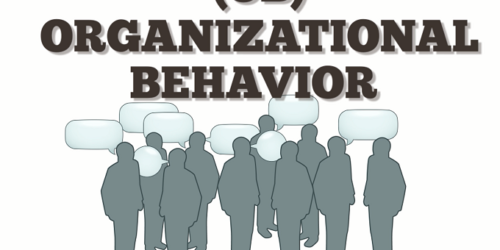Motivation Theories – Maslow, Herzberg, McGregor, McClelland

1. What is motivation?
Motivation is an individual’s drive, desire, self-encouragement towards achieving a goal.
One of the best-known theories of motivation [which is not really a theory about motivation, but has implications to motivation, and other things….] is Douglas McGregor’s Theory X and Theory Y:
- Theory X managers think that employees are lazy, they dislike work, they avoid responsibility so they always need to be pushed, controlled and/or threatened. Theory X managers usually have carrot and stick approach towards employees, as in ‘’If you do your work, you get a carrot; if you don’t do your work, you get a stick.’’
- Theory Y managers think that employees naturally like work, they have potential, they don’t evade responsibility, and they are not lazy. So they don’t need to be pushed, controlled, or punished all the time. They can exercise self-direction and self-control.
- In practice, most managers assume that employees have only physiological and safety needs, they can be motivated by satisfying those needs only because those are the only things that drive them. They ignore the fact that employees have actually needs like belonging, esteem and self-actualization too.
2. Why are different people motivated by different things?
Abraham Maslow believes people have five levels of needs which are:
- Level 1 – Physiology – Physiological needs in which people try to satisfy their basic needs which includes thirst and hunger before worrying about anything else.
- Level 2 – Safety – The need for security includes safety, job stability, a back and protection against danger, pain and illness.
- Level 3 – Social/Belonging – Affiliation includes things like friendship, love and a feeling of belonging.
- Level 4 – Esteem – Esteem needs are those in which people place value on feelings of self-worth and achievement, pride, recognition and status.
- Level 5 – Self-Actualization – “a desire for something more” comes to an end at this level. The need for self-actualization is the highest level of the hierarchy in which people try to reach their full potential.
People are motivated by those needs not yet satisfied.
Frederick Herzberg looked at the relationship between job performance and job satisfaction.
- Hygiene factors are things which motivate the employees to work to their full potential making sure that they get the best possible working environment around them. These factors can make us dissatisfied with our work when they are not around. These include factors like adequate pay and benefit programs, optimum health and safety standards and comfortable working conditions. In addition to these hygiene factors, Herzberg also mentioned about our relationship with our fellow workers. Hygiene factors don’t create satisfaction in employees. But if they don’t exist, they create dissatisfaction.
- However, to be truly motivated, people need the other set of factors which are motivators, advancements and responsibilities. These are important to spur the employees onto the superior performance. The existence of these factors create satisfaction for the employees.
David McClelland defined 3 needs that people have to different degrees, and these can be “learned” – they are the needs for:
- Achievement – the desire to seek challenges and solve the problem
- Power – Involving with others to accomplish a task using influence.
- Affiliation- Developing friendship sharing experience and gaining Acceptance.
- Most effective managers have – Similar motivational profile, having a strong need for power, low need for affiliation, high need for achievements
- Engineers have – The motivational profile of the low need for power, moderate need for affiliation, high need for achievement.
- Sales people – Have a motivational profile of high affiliation, some good sales persona having the ability to influence people often stems from high achievement to high power needs.
- Different jobs have different- requirements each person have a different style.
- The key is to match job demand to motivational profile
BF Skinner was interested in ways behaviour is learned as a result of its consequences, both negative and positive.
Human behaviour that is reinforced is likely to be repeated itself.
To influence behaviour, a manager has to be able to identify those rewards which employees feel like they are personally rewarded.
The way to do this is by:
- First step should be able to identify the specific behaviour you want to influence.
- Second step is to offer whatever rewards to reinforce the desired behaviours
Some of the similarities between the theories: All the theories agree that it can change and influence human behaviour. They all understand that everyone has different needs and is individual. All of them believe that understanding the key difference individually is part of learning motivational behaviour.
Differences are: Maslows identified 5 needs that need to be fulfilled from basic concerns such as food to self-actualization, and says that we are driven mainly by those left unfulfilled. Fredrick addresses two factors, hygiene and motivators. David McClelland believes the motivators are based on power, affiliation and accomplishment. Skinner thought actions could be changed until we learned to recognise and monitor rewards.
3. Which theory best explains how people are motivated?
When we use them in a combination that best suits the situations, they can all be effective. We need to use our judgment and discretion to determine which one(s) are to use in particular context or situation.
References
Biophily2. (2016). Motivation the Classic Concepts (1984) [Video file]. Retrieved June 24, 2020, from https://www.youtube.com/watch?time_continue=929&v=n1w6KZFmHOU&feature=emb_logo
gec118. (2007). Jumping for the Jelly Beans (1 of 2) [Video file]. Retrieved June 26, 2020, from https://www.youtube.com/watch?v=o87s-2YtG4Y&feature=emb_logo
gec118. (2007). Jumping for the Jelly Beans (2 of 2) [Video file]. Retrieved June 26, 2020, from https://www.youtube.com/watch?v=gtYi4102OvU&feature=emb_logo
Gemmy Allen. Motivation through Job Enrichment [Video file]. Retrieved June 26, 2020, from https://www.youtube.com/watch?v=NBU-t3WUNk4&feature=emb_logo
Lyon, A. [Organizational Communication Channel]. (2016). Douglas McGregor’s Theory X and Theory Y [Video file]. Retrieved June 24, 2020, from https://www.youtube.com/watch?time_continue=425&v=CXAzZRnJo2o&feature=emb_logo






I want to copy this assignment
We don’t allow copying on our website to avoid plagiarism. Thank you for your understanding.